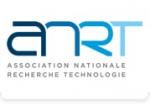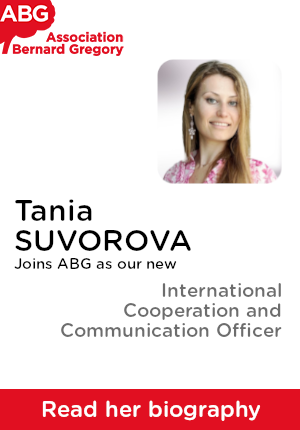Dynamiques neuronales sous-tendant la production de la variabilité des chants des oiseaux // Neuronal dynamics underlying birdsong variability
|
ABG-134099
ADUM-66679 |
Thesis topic | |
| 2025-10-30 |
Université Paris-Saclay GS Life Sciences and Health
Saclay - Ile-de-France - France
Dynamiques neuronales sous-tendant la production de la variabilité des chants des oiseaux // Neuronal dynamics underlying birdsong variability
- Biology
Apprentissage, Electrophysiologie in vivo à grande échelle, Bioacoustique, Traitement de signal, Oiseau chanteur
Learning, Large scale in vivo electrophysiology, Bioacoustics, Signal processing, Songbird
Learning, Large scale in vivo electrophysiology, Bioacoustics, Signal processing, Songbird
Topic description
La variabilité d'un essai à l'autre est inhérente à l'apprentissage. La variabilité motrice est particulièrement élevée lors de l'acquisition d'une nouvelle compétence (par exemple, faire du vélo), et un apprentissage réussi est généralement associé à une diminution de la variabilité. De tels changements développementaux de la variabilité sont observés au cours de l'acquisition de la parole chez les nourrissons humains, mais aussi au cours de l'apprentissage du chant chez les oiseaux chanteurs. Ces deux processus vocaux dépendent d'un apprentissage moteur guidé par la perception auditive au cours d'une période sensible du développement et présentent de nombreux parallèles comportementaux, neuronaux et génétiques. Leur acquisition et leur maintien dépendent d'un circuit cortico-ganglions de la base (BG). Ce circuit peut favoriser le traitement de la variabilité de ce qui doit être appris et, à son tour, conduire à la production de la variabilité par les sorties motrices, permettant l'exploration de l'espace moteur et la sélection des commandes motrices nécessaires à la production du comportement désiré. L'objectif de cette proposition est d'étudier les principes neuronaux qui sous-tendent la production et l'apprentissage de la variabilité vocale. Pour ce faire, nous proposons d'associer des approches comportementales, neurophysiologiques et computationnelles, en utilisant un système naturel (l'apprentissage du chant des oiseaux) comme modèle expérimental. Nous suivrons le développement du chant en relation avec les dynamiques neuronales au sein du circuit cortico-BG de jeunes oiseaux chanteurs. Ces données seront utilisées pour développer des modèles permettant de répondre à des questions centrales sur les trajectoires individuelles de l'apprentissage des chants d'oiseaux. Nous cherchons à comprendre 1/comment la variabilité du chant est encodée dans le circuit cortico-BG et traduite en commandes prémotrices, et 2/comment les dynamiques cérébrales au sein du circuit cortico-BG changent pendant l'apprentissage et le développement du chant des oiseaux. Nous combinerons des paradigmes comportementaux avec des enregistrements cérébraux, grâce à des dispositifs électrophysiologiques à grande échelle adaptés à l'utilisation d'oiseaux chanteurs éveillés, et des manipulations (perturbation de l'activité neuronale) pour mieux comprendre les dynamiques neuronales qui sous-tendent la variabilité du chant des canaris (Serinus canaria). Grâce à un réseau de collaboration avec des laboratoires partenaires en France et en Europe, les résultats permettront de construire des modèles d'apprentissage et d'acquisition d'habiletés sensorimotrices. À terme, ces résultats pourraient permettre de développer les outils nécessaires à la mise en œuvre de stratégies visant à améliorer la qualité de l'apprentissage chez les oiseaux et, dans une certaine mesure, chez les nourrissons humains.
------------------------------------------------------------------------------------------------------------------------------------------------------------------------
------------------------------------------------------------------------------------------------------------------------------------------------------------------------
Trial to trial variability is inherent to learning. Motor variability is particularly high when a new skill is being acquired (e.g. riding a bike), and successful learning is generally associated with a decrease in variability. Such developmental changes of variability are observed during speech acquisition in human infants but also during song learning in oscine songbirds. Both vocal processes depend on auditory-guided motor learning during a sensitive period of development, and exhibit many parallels at the behavioural, neural and genetic levels. Their acquisition and maintenance depend on a basal ganglia (BG)-cortical circuit. This circuit may support the processing of variability in what has to be learned and in turn drive the generation of variability in motor outputs, allowing the exploration of the motor space and the selection of the motor commands to produce the desired behaviour. The aim of this proposal is to investigate the neural principles underlying the production and learning of vocal variability. To do so, we propose to combine behavioural, neurophysiological and computational approaches, using a natural system (birdsong learning) as experimental model. We will track the song development in relation to the BG-cortical neuronal dynamics of individual young oscine songbirds. Then, these data will be used to develop models to address central questions about individual trajectories of birdsong learning. We aim at understanding 1/how song variability is encoded in the BG-cortical circuit and translated in premotor commands, and 2/how brain dynamics within the BG-cortical loop change during birdsong learning and development. We will combine behavioral paradigms along with brain recording, through large-scale electrophysiological devices adapted for use in awake singing birds, and manipulations (disruption of neural activity) to better understand the neuronal dynamics underlying song variability and development of canaries (Serinus canaria). Thanks to a collaborative effort with partner labs in France and Europe, the results will help building models of learning and sensorimotor skill acquisition. Ultimately, these results could help developing tools needed to implement strategies that improve the quality of learning in birds and to some extent to human infants.
------------------------------------------------------------------------------------------------------------------------------------------------------------------------
------------------------------------------------------------------------------------------------------------------------------------------------------------------------
Début de la thèse : 01/10/2026
------------------------------------------------------------------------------------------------------------------------------------------------------------------------
------------------------------------------------------------------------------------------------------------------------------------------------------------------------
Trial to trial variability is inherent to learning. Motor variability is particularly high when a new skill is being acquired (e.g. riding a bike), and successful learning is generally associated with a decrease in variability. Such developmental changes of variability are observed during speech acquisition in human infants but also during song learning in oscine songbirds. Both vocal processes depend on auditory-guided motor learning during a sensitive period of development, and exhibit many parallels at the behavioural, neural and genetic levels. Their acquisition and maintenance depend on a basal ganglia (BG)-cortical circuit. This circuit may support the processing of variability in what has to be learned and in turn drive the generation of variability in motor outputs, allowing the exploration of the motor space and the selection of the motor commands to produce the desired behaviour. The aim of this proposal is to investigate the neural principles underlying the production and learning of vocal variability. To do so, we propose to combine behavioural, neurophysiological and computational approaches, using a natural system (birdsong learning) as experimental model. We will track the song development in relation to the BG-cortical neuronal dynamics of individual young oscine songbirds. Then, these data will be used to develop models to address central questions about individual trajectories of birdsong learning. We aim at understanding 1/how song variability is encoded in the BG-cortical circuit and translated in premotor commands, and 2/how brain dynamics within the BG-cortical loop change during birdsong learning and development. We will combine behavioral paradigms along with brain recording, through large-scale electrophysiological devices adapted for use in awake singing birds, and manipulations (disruption of neural activity) to better understand the neuronal dynamics underlying song variability and development of canaries (Serinus canaria). Thanks to a collaborative effort with partner labs in France and Europe, the results will help building models of learning and sensorimotor skill acquisition. Ultimately, these results could help developing tools needed to implement strategies that improve the quality of learning in birds and to some extent to human infants.
------------------------------------------------------------------------------------------------------------------------------------------------------------------------
------------------------------------------------------------------------------------------------------------------------------------------------------------------------
Début de la thèse : 01/10/2026
Funding category
Funding further details
Programme CSC - UPSaclay
Presentation of host institution and host laboratory
Université Paris-Saclay GS Life Sciences and Health
Institution awarding doctoral degree
Université Paris-Saclay GS Life Sciences and Health
Graduate school
568 Signalisations et Réseaux Intégratifs en Biologie
Candidate's profile
Compétences requises :
• Expertise dans la manipulation des animaux et dans la réalisation d'expériences comportementales et/ou électrophysiologiques.
• Capacité à proposer de manière autonome des solutions à des problèmes techniques et/ou théoriques.
• Bonnes compétences en programmation en Matlab ou Python : les données à analyser nécessiteront de bonnes compétences en traitement du signal (chants d'oiseaux et activité neuronale).
• Maîtrise de l'anglais écrit et parlé (le français n'est pas obligatoire).
Qualification : Master en Neurosciences comportementales/des systèmes ou similaire
Required Skills: • Expertise in handling animals, and in performing behavioral and/or electrophysiological experiments. • Ability to independently suggest solutions to technical and/or theoretical problems. • Good computational/programming skills in Matlab or Python: data to be analysed will require good skills in signal processing (birdsong and neural activity). • Proficiency in written and spoken English (French is not mandatory). Qualification: MSc degree in Behavioral/Systems Neuroscience, or related field.
Required Skills: • Expertise in handling animals, and in performing behavioral and/or electrophysiological experiments. • Ability to independently suggest solutions to technical and/or theoretical problems. • Good computational/programming skills in Matlab or Python: data to be analysed will require good skills in signal processing (birdsong and neural activity). • Proficiency in written and spoken English (French is not mandatory). Qualification: MSc degree in Behavioral/Systems Neuroscience, or related field.
2026-01-21
Apply
Close
Vous avez déjà un compte ?
Nouvel utilisateur ?
More information about ABG?
Get ABG’s monthly newsletters including news, job offers, grants & fellowships and a selection of relevant events…
Discover our members
 Nantes Université
Nantes Université  Nokia Bell Labs France
Nokia Bell Labs France  ANRT
ANRT  Medicen Paris Region
Medicen Paris Region  Tecknowmetrix
Tecknowmetrix  Aérocentre, Pôle d'excellence régional
Aérocentre, Pôle d'excellence régional  TotalEnergies
TotalEnergies  ASNR - Autorité de sûreté nucléaire et de radioprotection - Siège
ASNR - Autorité de sûreté nucléaire et de radioprotection - Siège  Groupe AFNOR - Association française de normalisation
Groupe AFNOR - Association française de normalisation  Institut Sup'biotech de Paris
Institut Sup'biotech de Paris  ONERA - The French Aerospace Lab
ONERA - The French Aerospace Lab  Généthon
Généthon  Ifremer
Ifremer  Servier
Servier  Laboratoire National de Métrologie et d'Essais - LNE
Laboratoire National de Métrologie et d'Essais - LNE  SUEZ
SUEZ  ADEME
ADEME

